Keeping Coffee Simple
We asked Seth Mills, a barista, coffee roaster and coffee educator to describe his journey to simple, delicious coffee. Read on for tips on how to optimize your daily coffee routine without getting too lost in the weeds of complexity.
Enjoying a good cup of coffee is one of life’s simple pleasures. Being able to make delicious coffee at home? It hasn’t always been so simple.
My first coffee job was at a Starbucks kiosk inside a grocery store. I was 17. I soon began ignoring my university assignments to spend countless hours on the internet, learning as much about coffee as I could; the cultivation, how origin impacts flavor profile, how roasting works, and the different types of extraction. Back in the mid 2000s, there wasn’t much information online. I mostly relied on forums like CoffeeGeek and Tom Owen’s Sweet Marias to provide direction on the differences of processing methods, which grinder is the best and how to roast coffee at home in a popcorn popper.

I eventually got my degree but I abandoned my original plans and pursued a career working in the specialty coffee industry. My various positions and jobs in coffee proved pivotal to my desire to learn about coffee, improve my craft and share my passion about coffee with anyone who would listen. I usually reinvested my minimum wage paycheck and handful of tips in coffee equipment for experimenting and diving deeper down the wormhole of coffee. First it was a decent burr grinder, then it was a convection air coffee roaster, and eventually it was hundreds of dollars of the newest and hippest brewing devices on the market.
I learned a few important things that eventually led me to want to make coffee more approachable for people trying to brew good coffee at home.

1. Complicated Isn't Always Better
After spending thousands of dollars on coffee gizmos and gadgets over a decade, I don’t use most of them anymore. In my experience, coffee pros often make coffee more complicated than it needs to be. Sometimes that’s an attempt to eek out minuscule improvements here and there with complex solutions that look cool on Instagram but usually don’t make much of a difference in the cup. These days, I typically brew coffee at home three ways; most often it’s just a Hario V60-01 pour over when I’m making coffee for myself. When I am making coffee for my wife and myself I brew with my Ratio Eight. On weekends when I have a bit more time, I like to make myself a cappuccino and my wife an iced latte.
I have ditched the countless brewers and trinkets that once were a playground of coffee exploration. It’s not that there isn’t a place for people to have fun and experiment, but for most people, like me, the simplest solution is usually the best one.

2. Stick to the Basics
It was fun to play around with different coffee to water ratios, test different bloom times, and see if a specific brewing temperature could bring out more floral notes than fruity ones. After a while, I noticed that a few basic principles would result in the most consistent results. Now that I have young kids and am surrounded by chaos, I want simple and easy methods that consistently deliver great coffee when I need it most.
Good Ingredients: 75% of a good cup of coffee is just starting with good, fresh coffee and filtered water.
Brew Temperature: For lighter roasted coffee, which is harder to extract, you really want to get your water as hot as you can get it. Preheating brewing equipment and brewing with water right off the boil are simple but effective ways to improve your extraction.
Don’t Skimp on the Grinder: Other than paying for good beans, the best investment you can make is to invest a little bit of money in a good burr grinder. The fanciest of brewing devices or kettles can’t make up for unevenly ground coffee. Luckily the market has plenty of options for all budgets to get a durable burr grinder that will help you get amazing coffee for years to come.
Precision is Key: it’s often said that cooking is an art and baking is a science. You can be flexible with ingredients and methods with cooking, but baking requires exact quantities to produce a desirable outcome. Coffee is much the same as baking. Using a reliable digital scale to weigh your coffee and water eliminates the possibility of getting wildly different brews day after day. Find a ratio that you like (I personally like 1 part coffee to 15 parts water) and use that as your go to recipe.


3. Learn What You Do & Do Not Like
One benefit of frequent experimentation is you quickly find what you like in coffee, as well as what you don’t. In my early days of working at Starbucks, I had a manager who encouraged my interest in coffee and who gets a lot of credit for supporting my passion. He loved the musty, earthy and herbaceous qualities of Indonesian coffees. Initially, I thought these darker roasted semi-washed coffees from Sumatra were amazing and would often seek out coffees of this profile. Over time and as I graduated away from Starbucks’ “2nd wave” approach to specialty coffee, I began looking for a more wild and complex profile and fell in love with lighter roasted “fruit bomb” Ethiopian coffees or tart Kenyan coffees. Later still, I fell in love with more balanced coffees from central and South America with citrus acidity and chocolate finish.
This exposure to a variety of roast levels, origins and flavor profiles helps to refine your palate and undoubtedly, your preferences will become clear. Once you know what you like, it’s much easier to identify high quality roasters who source and roast the kinds of coffee you want to drink day in and day out.

Some of my favorite coffees I’ve been enjoying at home lately:
Luna Coffee - “Techno Peach” Ethiopia Nano Challa | Luna Coffee is one of my more recent roaster discoveries. I am a big fan of the coffees that Laura and Nate source, they are clean, bright and exceptional examples of the best coffees from each origin. Their Colombian coffees are balanced and nuanced, their Kenyan coffees are dynamic and punchy, and their Ethiopian coffees are floral and have the citric, stone fruit acidity I look for. This Ethiopia was a really enjoyable cup that I was all too disappointed when I ran out.

Verve Coffee Roasters - Costa Rica Jose Alvarado | I am a big fan of Verve’s whole vibe. From their laid back and quintessential Santa Cruz beach town branding to the way they run their business, I loved partnering with Verve in my years working in coffee. I was lucky enough to travel with Verve’s team to Costa Rica back in 2017 and meet Jose Alvarado, tour his farm, and taste his coffees. Any time I see coffees from producers I met on that origin trip, I always jump on the opportunity to grab a bag and experience a little bit of that memory again. This coffee is everything you want in a classic central american cup, with a supple mandarin citrus acidity complemented by a toffee and honey like sweetness.

Olympia Coffee Roasters - Sweetheart La Palma | I love a perfectly balanced extraction of espresso to sip on paired with bubbly water or in a rich, decadent cappuccino on a relaxed Saturday morning at home. Time and time again, Olympia’s approach to sourcing and roasting yields great results for a consistent shot of espresso with their Sweetheart series, no matter which rotating offering is available. Right now, they have the El Salvador La Palma in the mix with a big dark chocolaty body, and a burst of cherry sweetness and a pleasant, drying finish of toasted hazelnuts. Even if you don’t have an espresso machine at home, this coffee would taste great as filter coffee too.

After having left the coffee industry a few years ago and finding myself in similar shoes to many of my old customers, I realize that I want now what they have always wanted; to make a good cup of coffee without too much fuss. Luckily, it turns out that brewing great coffee can truly be that simple.
About the Author:
Seth Mills spent over a decade in the coffee industry as a barista, coffee roaster, coffee educator and, most recently, as the Director of Coffee at a coffee subscription service, shipping hundreds of thousands of curated coffees a year. Although he now works in tech, he maintains his passion for all things culinary, from mixing cocktails to cooking to brewing exceptional coffee at home.
Instagram: @sethmills
Photos by Ryan Cordwell.
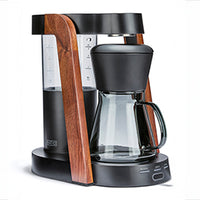 Ratio Eight S2
Ratio Eight S2
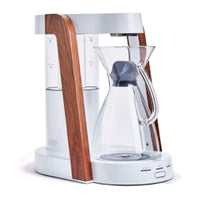 Ratio Eight Original
Ratio Eight Original
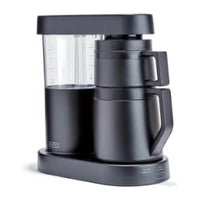 Ratio Six
Ratio Six
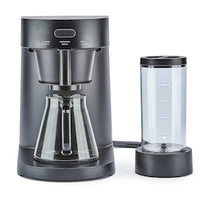 Ratio Four
Ratio Four
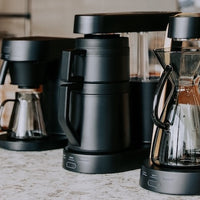 Compare Machines
Compare Machines






